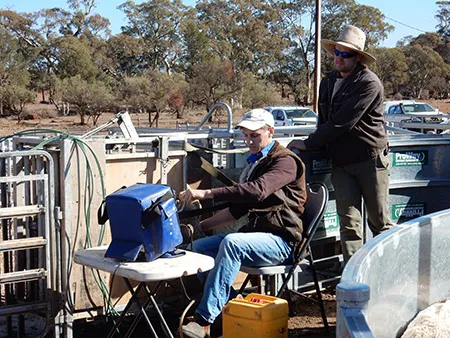Thinking of pregnancy scanning or have you been pregnancy scanning your ewe flock for a while?
Want to make adjustments to your pregnancy scanning and add ageing of foetuses? Before you do, check that you have other actions and benchmarks right – i.e. your rams are well prepared before joining, ewes in appropriate condition score, ‘best’ time of lambing is used, ewe nutrition well managed, paddocks allocated for lambing and weaning.
Ageing a foetus in humans is nothing new, but research results from mid-2018 into ageing lamb foetus at scanning may lead to better managed lambing and improved lamb survival.
Researchers at CSIRO and the University of New England (Armidale NSW) found that measuring head size, the bi-parietal diameter (BPD) at scanning, enabled
the foetal age of the lamb to be better predicted. Ewes can then be allocated to three lambing groups – early, mid and late lambing.
Skilled contractors can scan ewes for multiples and age the foetuses conceived in either in the first or second cycle of joining. This information can be used to separate mobs into lambing flocks and better allocate feed and limit the number of ewes in twinning mobs. Adding ageing of foetuses adds time and cost to scanning, with an average of 250-300 ewes scanned per hour, according to Michelle Cousins, Cousins Merino Services.
Scanning for foetal age can be an additional tool, which can inform management but also accurate comparison of young animals - as many early in life traits are affected by age, and unless mothering up is performed or lambing date can be predicted, age is unknown.
Inclusion of foetal age in your scanning program can provide you with valuable information, but planning how this additional data will be used in your management program is paramount.
Want to know more read the AWI article and listen to the interview with researcher Dr Kim Bunter.
Read Case Study - Improving reproduction efficiency through pregnancy scanning





